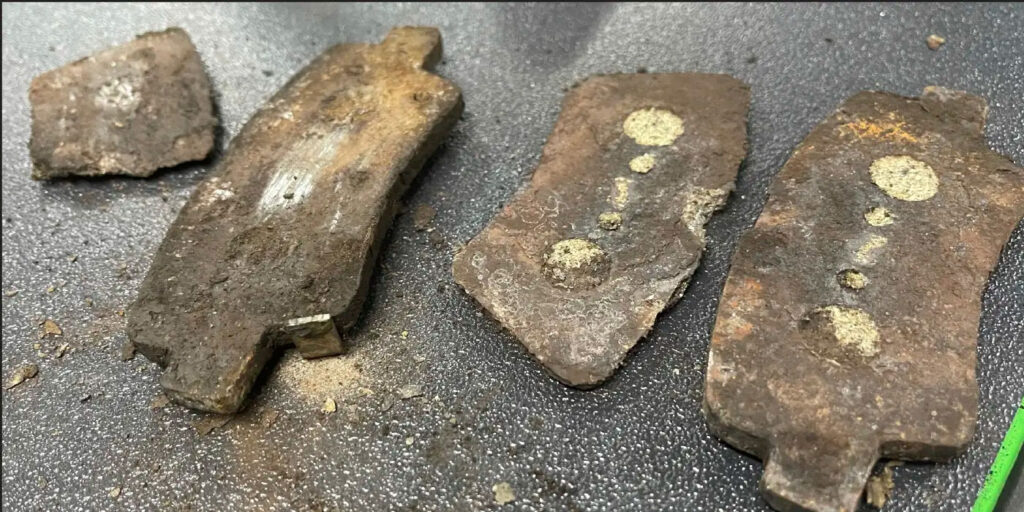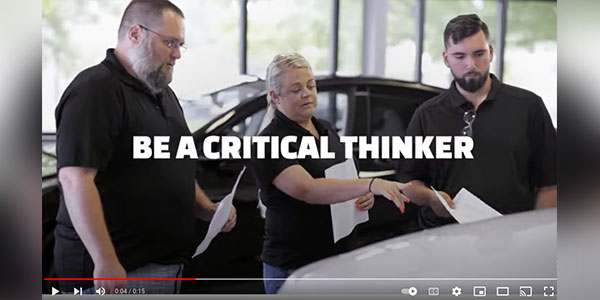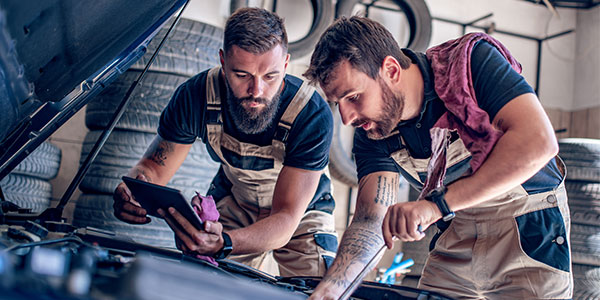Recently, we were moving around a 2016 Kia Soul in the Babcox Media Garage for a video shoot. All of a sudden, the right rear wheel locked up solid. The diagnostic minds in the garage started to come up with a cause based on what we were seeing. The people standing around blamed the parking brake, ABS isolation solenoids and even the brake line developing an internal flap restriction. It was not until the wheel was pulled that we saw the state of the brake pads and rotors.
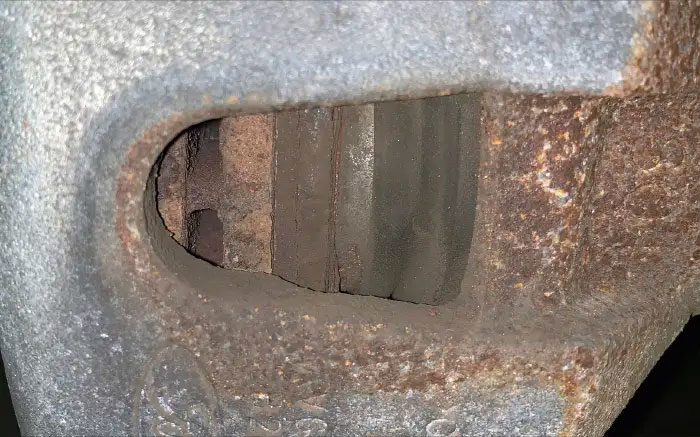
After the caliper was pried off with a screwdriver, we saw the condition of the brake pads. The friction material was worn down to 4mm and was getting close to the wear sensors on both sides. The inboard pad on the right side was missing half of the friction material.
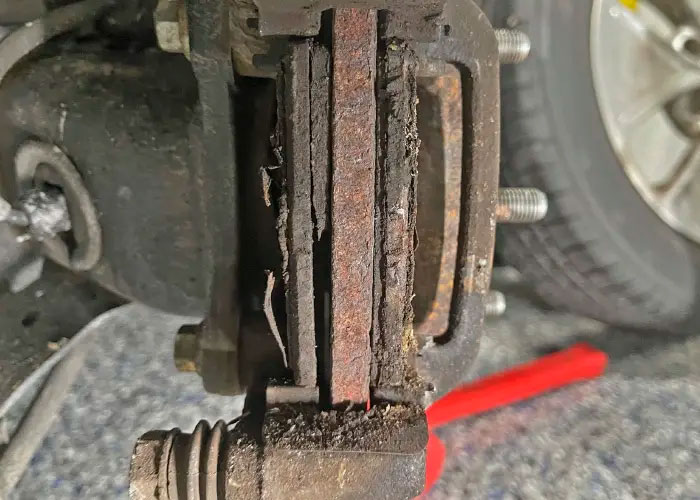
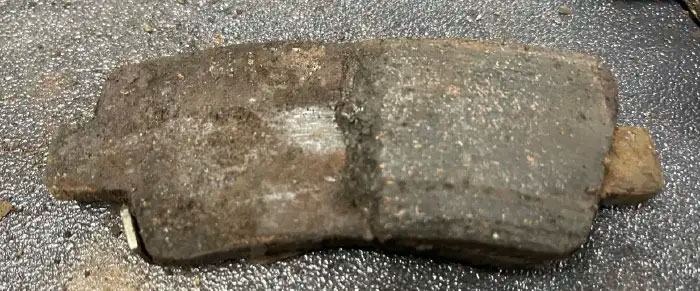
So, what caused this failure? The Soul in question had only 65,000 miles. The owner’s commute is on freeways 90 percent of the time. But, it is a question of exposure to a very corrosive environment over four years. The corrosion did attack the backing plate, shim and surfaces that make contact with the bracket. But, the area of the backing plate to which the friction material attaches received the most significant corrosion. The corrosion caused the friction material to delaminate from the backing plate.
This is a difficult condition to spot using normal inspection methods. The typical failure starts at the ends of the brake pads. Small pieces can break off the ends and can be seen between the caliper bracket and rotor. Some failures leave the fraction material intact, but you can slide a feeler gauge between the backing plate and friction material.
The owner of the Kia Soul was lucky. The delamination failure could have happened on the road. The best-case scenario was that it would have left him stranded. The worse-case scenario would be a sudden loss of control.
Inspection
Never judge the condition of the brake pads using just one pad. Both pads and their thicknesses need to be inspected and documented. Never take rust or corrosion lightly. Corrosion on the caliper and pads is an indication the coating, plating or paint has failed and needs to be addressed.
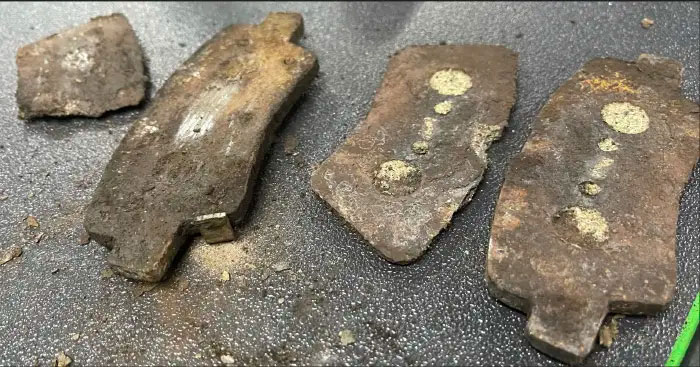
Never estimate condition or thickness using percentages. It is impossible to predict the life left in a brake pad with a percentage. While most consumers might be able to understand a percentage, it is misleading and often inaccurate. In order to accurately estimate the percentage of material worn on a brake pad, you would first have to know how much friction material was present when the pad was new. No matter the make, there is a specification for minimum thickness that is between 2-5mm.
Tapered wear may be caused by improper pad installation, but the more likely culprit is worn guide pin bushings. Also, corrosion under the abutment clip can cause one ear of not move. The only way to correct for tapered wear is to make sure the hardware and caliper can apply the pads with equal force. Hardware kits are available to replace the bushings.
Conditions that cause the outer brake pad to wear at a higher rate than the inner pads are rare. This is why wear sensors are rarely put on the outer pad. Increased wear is typically caused by the outer pad continuing to ride on the rotor after the caliper piston retracts. This could be caused by sticky guide pins or slides. If the brake caliper is an opposed-piston design, outer brake pad wear is an indication the outer pistons have seized.
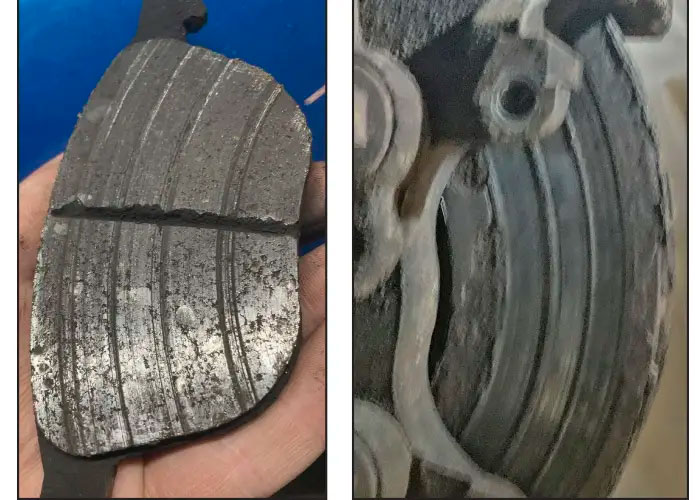
Inboard brake pad wear is the most common brake pad wear pattern. On a floating-caliper brake system, it is normal for the inner to wear faster than the outer – but this difference should only be 2-3mm.
More rapid inner pad wear can be caused by a seized caliper guide pin or slides. When this happens, the piston is not floating, and equalizing force between the pads and the inner pad is doing all of the work.
Inner pad wear can also happen when the caliper piston is not returning to the rest position due to a worn seal, damage or corrosion. It can also be caused by a problem with the master cylinder.
To correct this type of wear, take the same steps as fixing outer pad wear as well as inspecting the hydraulic brake system and the caliper for residual pressure and guide pin hole or piston boot damage, respectively. If the pin holes or piston boot are corroded or damaged, they should be replaced.
There are multiple reasons why brake pads can overheat. The surface may be shiny and even have cracks, but the damage to the friction material goes deeper.
When a brake pad exceeds expected temperature ranges, the resins and raw components can break down. This can change the coefficient of friction or even damage the chemical makeup and cohesion of the brake pad. If the friction material is bonded to the backing plate using only adhesive, the bond can be broken.
It does not take driving down a mountain to overheat the brakes. Often, it is a seized caliper or a stuck parking brake that causes a pad to be toasted. In some cases, it is the fault of a low-quality friction material that was not adequately engineered for the application.
Mechanical attachment of the friction material can give an extra layer of safety. The mechanical attachment goes into the last 2-4 mm of the friction material. Not only does mechanical attachment improve shear strength, but it also provides a layer of material that remains if the friction material that will not separate under extreme conditions.
A backing plate can be bent as the result of several conditions. The brake pad can become seized in the caliper bracket or slides due to corrosion. When the piston presses on the back of the pad, the force is not equal across the metal backing plate.
The friction material can become separated from the backing plate and change the relationship between the rotor, backing plate and caliper piston. If the caliper is a two-piston floating design, the pad can become bent and even cause a hydraulic failure.
The main culprit of friction material separation is typically corrosion. If a replacement brake pad uses a low-quality backing plate that is thinner than the original, it can bend and cause the friction material to separate from the backing plate.

